Reported Health Benefits of a Vegan Dog Food – A Likert Scale-Type Survey of 100 Guardians
Mike Davies*
RCVS Specialist in Small Animal Clinical Nutrition, Provet Limited, Gillingham, Dorset, SP8 4LJ United Kingdom
*Corresponding author: Mike Davies BVetMed CertVR CertSAO FRCVS, RCVS Specialist in Small Animal Clinical Nutrition, Provet Limited, Gillingham, Dorset, SP8 4LJ United Kingdom.
Received: 06 August 2022; Accepted: 23 August 2022; Published: 09 September 2022
Article Information
Citation: Mike Davies. Reported Health Benefits of a Vegan Dog Food – a Likert Scale-type Survey of 100 Guardians. Archives of Clinical and Biomedical Research 6 (2022): 889-905.
View / Download Pdf Share at FacebookAbstract
Introduction: There has been a large increase in feeding plant-based foods to pets and advocates extol the health benefits of this practice. However, there is a lack of scientific evidence to support health claims for vegan diets in dogs.
Aims: This study aimed to quantify perceived health changes by dog guardians following the feeding of a single brand of UK-produced vegan food for a period of 3 to 12 months.
Methods: Dog guardians registered as feeding the vegan food for 3 - 12 months were invited to participate in an online Likert Scale-type survey of observations reflecting health status. Results: 100 guardians completed the survey. The vegan food was acceptable (palatable), and appetite and body weight were not adversely affected. Changes, including improvements, were reported and statistically significant at p< .05 in the following areas: activity, faecal consistency, frequency of defaecation, flatus frequency, flatus antisocial smell, coat glossiness, scales in haircoat (dandruff), redness of the skin (erythema, inflammation), itchiness (scratching; pruritus), and anxiety.
Conclusions: This is the first study to quantitatively document guardian reports of apparent specific health benefits associated with feeding a UK vegan dog food. Further prospective, randomised, controlled clinical trials are needed to validate and determine the significance of these observations.
Keywords
Activity; Anxiety; Coat Glossiness; Dog Food; Erythema; Faecal Consistency; Frequency of Defaecation; Flatulence, Health Benefits; Itchiness Pruritus; Nutrition; Plant-Based; Scales; Vegan; Vegetarian
Activity articles; Anxiety articles; Coat Glossiness articles; Dog Food articles; Erythema articles; Faecal Consistency articles; Frequency of Defaecation articles; Flatulence articles, Health Benefits articles; Itchiness Pruritus articles; Nutrition articles; Plant-Based articles; Scales articles; Vegan articles; Vegetarian articles
Article Details
1. Introduction
In recent years there has been an increase in feeding vegetarian and vegan foods to pets, with the vegan pet food market being valued at $9.6 billion in 2020 and is estimated to reach $16.3 billion by 2030 [1]. Proponents of plant-based foods often claim a variety of health benefits without providing scientific evidence to support their claims. A UK-based company (Omni) launched a range of plant-based (vegan) dog foods in April 2021 and noticed that some customers were posting messages online through a feedback service Trustpilot claiming improvements in their pets’ health, particularly skin and gastrointestinal problems. Trustpilot.com is a Danish consumer review website founded in 2007 which hosts reviews of businesses worldwide. Dogs are classified as Carnivora however domestic breeds of dog are no longer regarded as carnivorous - they are true omnivores as are many other Carnivora - including bears and pandas - some of which, like Giant Pandas, are vegetarian. Dogs have genetically evolved a long way from wild canids which do remain carnivorous, for example they have undergone 10 gene changes from wolf ancestors that facilitate the utilisation of starch [2,3,4] as well as other changes including the presence of amylase in saliva [5] and high glucokinase enzyme concentrations in the liver [6]. The life stage and other variable factors that affect the nutritional requirements of individual dogs (including wide breed variations in body size, physical exertion, reproduction and lactation, growth, advancing age, and environmental conditions) are well documented [7] and are taken into consideration by the European Pet Food Industry (FEDIAF) when they compile their Nutritional Guidelines [8] which pet food manufacturers should comply with. The food in this study has been formulated to meet all FEDIAF Guidelines and batches are analysed after production to ensure compliance. Historically, there were concerns about whether a vegan diet could be Complete and provide adequate amounts of some essential nutrients including choline, vitamins B12, D3, pantothenic acid (vit B5), methionine, zinc, taurine, n-3 and n-6 fatty acids. For all pet foods, potential deficiencies due to raw ingredient selection are rectified by the addition of a mineral/vitamin supplement. Thanks to the discovery of novel sources and synthetically produced nutrients it is now possible to meet all canine nutrient requirements as stated in the FEDIAF Guidelines from non-animal sources. As an example, Vitamin D3 is now available in a form produced by algae. In a recent paper [9] 336 dog guardians feeding vegan diets participated in a global online survey and the authors concluded that, “the healthiest and least hazardous dietary choices for dogs, among conventional, raw meat and vegan diets, are nutritionally sound vegan diets”. In this study some health issues were mentioned but there were no data on specific changes in health status following a switch to feeding vegan. Previous published papers have shown that vegan diets labelled as complete and recipes for homemade vegan rations did not comply with AAFCO or FEDIAF Nutritional Recommendations and therefore, contrary to providing health benefits would represent a potential health risk [10-13]. One study [14] looked at the short-term effects of a vegan diet on amino acid, clinicopathologic, and echocardiographic findings and found no adverse effects and did not detect essential amino acid or taurine deficiency. All batches of the vegan diet involved in this study are analysed by the University of Nottingham to ensure that they still exceed FEDIAF Guidelines after manufacture. Dog carers who feed them may not be their legal owners and so in this paper they are referred to as guardians.
2. Objectives
The aim of this study was to document and quantify any changes in signs associated with health status observed by guardians following a switch to feeding dogs a single brand of complete vegan food for over 3 months.
The aim was to see if there was any improvement or deterioration in guardian observations that may reflect health status including:
- Acceptability of food when first fed. Would vegan food be appetising enough for dogs to eat?
- Would vegan food increase or depress appetite?
- Body weight. High or low body weight can reflect poor nutrition or be a sign of disease
- Body condition score (BCS) – High or low body condition scores are a sign of poor health and changes may reflect nutrition, altered activity level or clinical disease
- Activity level - Reduced activity can reflect poor health, for example due to malnutrition, anaemia and organic disease such as osteoarthritis or cardiorespiratory conditions.
- Gastrointestinal changes: Gastrointestinal signs such as diarrhoea can reflect poor nutrition or poor health such as small intestine disease, pancreatic disorders, liver disease, maldigestion or malabsorption as well as the presence of pathogenic infections.
- Faecal consistency Abnormal faecal consistency is a sign of ill-health, especially watery faeces (diarrhoea) with several causative mechanisms (secretory, osmotic, or motility disorders) or very hard dry faeces resulting in constipation
- Frequency of defaecation. Defaecation frequency can reflect altered transit time which can result in nutrient malabsorption and diarrhoea, or conversely, constipation if faeces becomes too dehydrated.
- Colour of faeces. Faecal colour can be due to nutritional content of the food or disease for example black faeces can be melaena due to intralumenal haemorrhage
- Flatus frequency. Expelled gases from the gastrointestinal tract consist of swallowed air and gas produced by bacterial fermentation of undigested food ingredients, especially dietary fibres. Excessive flatulence can reflect maldigestion and/or malabsorption.
- Flatus antisocial smell. Foul smelling flatus may reflect poor health for example maldigestion of food ingredients like proteins resulting in increased availability for bacterial degradation.
- Dermatological signs
- Skin coat shine reflects good skin and hair condition and nutritional deficiencies including lack of essential fatty acids, amino acids or trace elements can all affect hair quality and appearance as well as other disorders such as thyroid disease.
- Excessive shedding of skin cells results in scale (dandruff) in the haircoat. This can reflect many nutritional deficiencies or excesses and other health problems, for example hypothyroidism.
- Redness (erythema) of the skin. There are many causes of erythema which is abnormal inflammation of the skin including nutritional deficiencies and food or contact allergies.
- Crusting of the external ear canals. The accumulation of crusts and reddening (inflammation) in the outer ear canal is typical of the common clinical condition called otitis externa which causes discomfort, irritation and self-trauma.
- There are many causes of itching (pruritus) which is a common clinical sign and a reflex response to a trigger such as parasites, allergies or nutritional problems including deficiencies or allergies.
- Behaviour
It is well known that some nutrients, for example amino acids and minerals may have a role to play in the expression of abnormal behaviours
- Anxiety
- Aggression
- Any other behavioural changes
3. Hypothesis
The study was designed to acquire data to disprove the hypothesis that “Feeding a vegan diet to dogs does not provide health benefits”.
4. Ethics
The study was designed to comply with established ethical standards and it was decided that the protocol did not need formal external review panel approval. The study complied with guidance set out in the Royal College of Veterinary Surgeon’s Ethical Review for Practice-based Research [15] and guidance on ethics in questionnaires published online [16].
5. Methods
5.1 Data Collection
All data was collected, stored and used in accordance with The Data Protection Act 2018 and the General Data Protection Regulation (GDPR).
5.2 The Vegan Dog Food
The extruded plant-based vegan pet food fed to the dogs in this study was formulated by veterinarians and manufactured in the UK. The declared typical analysis is Protein 30%, Fat 9%, Fibre 3% and Ash 6%. The main ingredients incorporated into the recipe (present at >4% inclusion rate) include: Potato Protein, Pea starch, HiPro Soya, Brown Rice, Sweet potato, Dried Brewer’s Yeast, Oats, Peas, Pea Protein, Carrot and Rapeseed Oil. It also contains Hydrolysed vegetables, Lentils, Sunflower oil, Minerals, Micro-algae, Blueberries, Cranberries and Pumpkin. Additives per 1kg : Vitamin A 25,000 IU, Vitamin D3 1800 IU, Vitamin E 245 IU, Taurine 1500mg, L-carnitine 250mg, Methionine 2000mg, Zinc (as zinc sulphate monohydrate) 70mg, Zinc (as zinc chelate of glycine hydrolysates) 50mg. Manganese (as manganese sulphate monohydrate 25mg, Iron (as iron (II) sulphate monohydrate) 30mg, Copper (as copper (II) sulphate pentahydrate 10mg, Iodine (as Calcium iodate anhydrous) 1.56mg. Selenium (as organic selenium 3b8.10) 0.2mg.
5.3 Recruitment of Guardians
On 18th March 2022 the company Omni sent individual emails using email marketing software Kaviyo (https://www.klaviyo.com) to 307 randomly selected dog guardians who had been registered as feeding their plant-based food for at least 3 months. They were invited to participate in an online survey to generate basic information and data about perceived changes in health and informed consent was obtained to publish the results afterwards. The survey went live on 18th March 2022 and was terminated on 25th April 2022 by which time 101 people had completed it. A second email was sent to 100 enrolled respondents later with a few supplementary questions regarding the dog breed, sex and feeding practices before switching to the plant-based food.
5.4 The Likert Scale-type Survey
An online Likert Scale-type questionnaire was created and analysed in accordance with established guidelines [17,18]. The questions were created by the author and assessed for clarity, objectivity, appropriateness, avoidance of leading questions and ease of use by veterinarians working with the company. The online questionnaire was created using Typeform (https://www.typeform.com) to collect the data. Apart from the question about colour of the faeces, the questions in the main survey were based on a 5-point Likert scale in which the middle option was “No change” and either side were two options to report a slight or great improvement or deterioration in observations that may reflect health status as described and listed in the study objectives:
5.4.1 Acceptability: Guardians were asked to select one of the following that best described what happened when they first introduced the plant-based food to their dog.
Options:
|
1 |
2 |
3 |
4 |
5 |
|
My dog did not like the food at all and refused to accept it |
Hardly any of the food was eaten and other foods had to be mixed with it |
The food was introduced gradually over a few days and it was accepted well |
Some of the food was eaten, the rest was eaten later |
The whole meal was eaten with enthusiasm |
5.4.2 Appetite: Guardians were asked: How good was your dog’s appetite before you switched to the plant-based food?
After changing to the plant-based food what effect, if any, was there on appetite:
Options:
|
1 |
2 |
3 |
4 |
5 |
|
Appetite was greatly reduced |
Appetite decreased slightly – less hungry |
No change in appetite |
Appetite increased slightly |
Appetite increased a lot with begging behaviour |
5.4.3 Body Weight: Guardians were asked: After switching to the plant-based food what approximate changes did you notice in body weight?
Options:
|
1 |
2 |
3 |
4 |
5 |
|
Body weight decreased by more than 10% |
Body weight decreased by less than 10% |
There was no change in body weight |
Body weight increased by less than 10% |
Body weight increased by more than 10% |
5.4.4 Body Condition Score (BCS): Guardians were asked: If you measure your dog’s Body Condition Score (BCS) using a recognised chart please answer this question (if not please skip this question).
After switching to the plant-based food what change have you noticed in body condition score (BCS)?
Options:
|
1 |
2 |
3 |
4 |
5 |
|
The BCS decreased by 2 or more points |
The BCS decreased by 1 point |
There was no change in BCS |
The BCS increased by 1 point |
The BCS increased by 2 or more points |
5.4.5 Activity Level: Guardians were asked: How active was your dog before switching to the plant-based food?
After switching to the plant-based food what changes in activity, if any, did you notice?
Options:
|
1 |
2 |
3 |
4 |
5 |
|
Activity decreased a lot |
Activity decreased a bit |
There was no change my dog’s activity |
Activity increased a bit |
Activity increased a lot |
5.5 Gastrointestinal Signs
5.5.1 Defaecation Frequency: Guardians were asked: How many times did your dog defaecate (pass motions) per day before you switched to the plant-based food?
After feeding the plant-based food what happened?
Options:
|
1 |
2 |
3 |
4 |
5 |
|
Defaecation decreased by 2 or more times per day |
Defaecation decreased by 1x per day |
No change in frequency of defaecation |
Defaecation increased by 1x daily |
Defaecation increased by 2 or more per day |
5.5.2 Faeces (stool) Consistency: Guardians were asked: What was your dog’s faeces (stools) like before you switched to the plant-based food?
After switching to the plant-based food how did the consistency of faeces (stools) change?
Options:
|
1 |
2 |
3 |
4 |
5 |
|
Faeces (stools) became very watery and loose (diarrhoea) |
Faeces (stools) became softer but were still formed |
No change in consistency |
Faeces (stools) became firmer and more well formed |
Faeces (stools) became very hard and dry |
5.5.3 Faecal Colour: Guardians where asked: What colour were your dog’s faeces (stools) before you switched to the plant-based ration?
What happened to the faeces colour after you changed to the plant-based food?
5.5.4 Flatus (Passing Wind) Frequency: Guardians were asked: Did your dog pass a lot of flatus “wind” before you switched to the plant-based food?
After switching to the plant-based food did you notice any change in frequency of flatus?
Options:
|
1 |
2 |
3 |
4 |
5 |
|
Passing wind increased a lot |
Passing wind increased a bit |
There was no change in passing wind |
Passing wind decreased a bit |
Passing wind decreased a lot |
5.5.5 Antisocial Smelling Flatus (Wind): Guardians were asked: Did your dog pass antisocial smelling wind before switching to the plant-based diet?
After switching to the plant-based food did you notice a change in the smell of “wind” passed by your dog?
Options:
|
1 |
2 |
3 |
4 |
5 |
|
The smell of wind got much worse |
The smell of wind got a bit worse |
There was no change in smell of wind passed by my dog |
The smell of wind improved a bit |
The smell of wind passed improved greatly |
5.6 Dermatological Signs
5.6.1 Haircoat Shine (Glossiness): Guardians were asked: How shiny was your dog’s coat before switching to the plant-based food e.g dull, normal or shiny?
How did your dog’s haircoat change (if at all) following the change to plant-based food?
Options:
|
1 |
2 |
3 |
4 |
5 |
|
There was a great decrease in glossiness of my dog’s hair coat |
There was a slight decrease in glossiness of my dog’s hair coat |
There was no change in glossiness of my dog’s hair coat |
There was a slight increase in glossiness of my dog’s hair coat |
There was a great increase in glossiness of hair coat |
5.6.2 Scale (Dandruff): Guardians were asked: Did your dog have scales (dandruff) before switching to the plant-based food?
What happened afterwards?
Options:
|
1 |
2 |
3 |
4 |
5 |
|
Scale increased greatly |
Scale increased slightly |
No change |
Scale reduced slightly |
Scale reduced greatly |
5.6.3 Crusting in Ears (Otitis Externa): Guardians were asked did your dog have crusting, wax build up or redness in its ear canal before starting the plant-based food?
After switching to the plant-based food what changes if any did you notice
Options:
|
1 |
2 |
3 |
4 |
5 |
|
The amount of crusting increased a lot |
The amount of crusting increased slightly |
There was no change in crusting in the ear canal |
The amount of crusting reduced |
The amount of crusting resolved totally |
5.6.3 Itchiness (Pruritus): Guardians were asked whether their dog was itchy before switching to the plant-based food, and if so to report what change (if any) they noticed after switching
Options:
|
1 |
2 |
3 |
4 |
5 |
|
There was a great increase in itching |
There was a slight increase in itching |
There was no change in itching |
There was a slight decrease in itching |
The itching resolved totally |
5.6.4 Skin Redness (Erythema, Inflammation): Guardians were asked if their dog had skin redness (inflammation) before switching to the plant-based diet and if so what change (if any) did they notice:
Options:
|
1 |
2 |
3 |
4 |
5 |
|
A great increase in redness |
A slight increase in redness |
No change in redness |
A slight reduction in redness |
Total resolution of the redness |
5.7 Behavioural signs
5.7.1 Aggression: Guardians were asked: After switching to the plant-based food have you noticed any changes in aggressive behaviour. If your dog never shows aggression you do not need to answer this question, please select 'Not relevant' and move on
Options:
|
1 |
2 |
3 |
4 |
5 |
|
Aggressive behaviour got a lot worse |
Aggressive behaviour got a bit worse |
There was no change aggressive behaviour |
The amount of aggression reduced |
Previous aggressive behaviour resolved |
5.7.2 Anxiety: Guardians were asked did your dog have signs of anxiety before starting plant-based food?
If so, after switching to plant-based food what changes did you notice in anxiety?
Options:
|
1 |
2 |
3 |
4 |
5 |
|
The amount of anxiety got much worse |
The amount of anxiety got slightly worse |
There was no change in anxiety |
The amount of anxiety reduced slightly |
My dog stopped showing any signs of anxiety |
5.7.3 Other Behaviour: Guardians were asked: Did your dog have other behaviour problems before starting the plant-based food e.g coprophagia (eating poo), chewing furniture? If so, please specify:
After switching to plant-based food what changes did you notice in behaviour?
Options:
|
1 |
2 |
3 |
4 |
5 |
|
The behavioural problem got much worse |
The behavioural problem got slightly worse |
There was no change in behaviour |
The behavioural problem improved slightly |
The behavioural problem resolved totally |
5.8 Statistical Analysis
Statistical analysis of Likert-type scale data is controversial [18] and “the best way to display the distribution of responses is to use a bar chart” [19]. So, the results of this study are expressed in simple descriptors and bar chart graphic format. In addition, statistical significance with significance set at p < .05 has been calculated using Chi Squared Test to generate p values. The calculations were made using an online calculator at https://www.socscistatistics.com/tests/chisquare2/default2.aspx
6. Results
6.1 The Likert Scale-type Survey
101 dog guardians completed the survey however one respondent had not actually started feeding the plant-based food and so their answers had to be deleted from the analysis. Some guardians failed to answer some sections, or did not answer questions correctly. An example of an inappropriate answer was when some respondents claimed that their dog was not itchy before switching diets, but then reported that there had been a great improvement afterwards. Clearly such a response was not possible if the dog was not initially itchy so those results had to be excluded from the analysis. The survey response rate was 32.6%. In expressing the results all percentages have been rounded to one decimal point.
6.2 Key
n=number of valid responses, out of 100 possible.
% = percent of the number of valid responses, expressed to one decimal point
NAn – Not answered
NAa – Not appropriate answer
NR – Not relevant
6.3 Acceptability (n=100)
82 dogs (82%) ate the novel plant-based food with enthusiasm when presented with it for the first time. 10 dogs (10%) ate some of the food when it was first presented then went back and finished it off later, 7 dogs (7%) ate the food when it was introduced gradually over several days, one dog would only accept the food if it was mixed with other foods. None of the dogs refused to eat the food. So, this plant=based food was highly acceptable (palatable).
6.4 Appetite (n=97) (NAn-3)
The majority (70 (72.2%)) of guardians reported that their dogs’ appetite did not change after switching to the plant-based food. 16 guardians (16.5%) reported a slight increase in their dogs’ appetite and 7 guardians (7.2%) reported a great increase in appetite, with their dog showing begging behaviour for more food. 4 guardians (4.1%) reported that their dog ate slightly less after switching. No dogs lost their appetite totally. The chi-square statistic is 23.0475. The p-value is .000124. The result is significant at p < .05.
6.5 Body Weight Changes (n=100)
71 guardians (71%) reported no change in body weight following a change to the plant-based food. 17 (17%) reported a drop in weight of which 4 (4%) dogs lost more than 10% of initial weight and 13 (13%) less than 10% weight. 12 guardians (12%) reported that their dogs had gained weight on the plant-based food, of which 8 (8%) gained less than 10% weight and 4 (4%) gained more than 10% of initial weight. The chi-square statistic is 24.1792. The p-value is .000074. The result is significant at p < .05.
6.6 Body Condition Score (BCS) (n=20)
20 guardians (20%) claimed they were using an accredited BCS score chart and completed this section. In 13 (65%) of these dogs BCS did not change, 3 dogs (15%) gained 2 or more BCS points, 3 (15%) gained one BCS point, and one dog (5%) lost 1 BCS point. The chi-square statistic is 3.2995. The p-value is .509009. The result is not significant at p < .05
6.7 Activity Level (n=97) (NAn=3)
Following a switch to the plant-based food 67 (69.1%) dogs did not exhibit any change in activity. An increase in activity (a health benefit) was reported for 28 (28.9%) dogs, in 19 (19.6%) activity was slightly increased and 9 dogs (9.3%) became much more active. 4 (4.1%) of these dogs were not very active before the change in diet, 9 (9.3%) were active already and 3 (3.1%) were very active. Two dogs (2.1%) were reported to be slightly less active after the change in food. No dogs were reported to be a lot less active after switching to the vegan food. The chi-square statistic is 10.1515. The p-value is .037952. The result is significant at p < .05
6.8 Gastrointestinal Signs
6.8.1 Defaecation Frequency (n=94) (NAn=6): Prior to switching diets 9 dogs (9.6%) were defaecating once per day, 32 (34.0%) twice per day, 33 (35.1%) three times per day, 12 (12.8%) four times per day, 3 (3.2%) five times per day, 4 (4.3%) six times per day and 1 (1.1%) eight times per day.
Of the 94 guardians who completed this section 53 (56.4%) reported that there had been no change in defaecation frequency after switching to the plant-based food. 11 guardians (11.7%) reported that their dog passed one more motion per day, and 6 (6.4%) that their dog passed 2 or more additional motions per day. The number of motions passed per day decreased by 1 in 16 dogs (17.0%) and by 2 or more per day in 8 dogs (8.5%). The chi-square statistic is 40.1579. The p-value is < 0.00001. The result is significant at p < .05
6.8.2 Faecal Consistency (n=96) (NAn=4): Prior to switching to a plant-based food 52 (54.2%) guardians described their dog’s faeces as being of normal consistency, 22 (22.9%) as soft, 10 (10.4%) as watery, 9 (9.4%) as hard and 2 (2.1%) as very hard. After switching a total of 35 guardians (36.5%) reported no change in faecal consistency, 37 (38.5%) reported the faeces was firmer, 2 (2.1%) that the faeces was much harder, 22 (22.9%) reported that the faeces was softer and no guardians reported that the faeces became watery. In the dogs with normal faeces there was no change in consistency in 33 (63.5%), in 8 (15.2%) the stools became firmer and 11 (21.2%) softer after diet change. The chi-square statistic is 17.2597. The p-value is .001721. The result is significant at p < .05.
In dogs with watery faeces before switching to plant-based ration there was no change in one dog but 9 out of ten (90.0%) developed firm faeces on the plant-based food (a health benefit). The chi-square statistic is 12.8. The p-value is .012296. The result is significant at p < .05. For dogs with soft faeces prior to diet change 19 out of 22 (86.4%) developed firm faeces after the change (a health benefit), there was no change in consistency in two (10.5%) of the dogs and in one dog (5.2%) faeces got softer. The chi-square statistic is 30.9273. The p-value is < 0.00001. The result is significant at p < .05.
For dogs with hard faeces initially 6 out of 9 (66.7%) the dog’s faeces was softer but still formed after switching (a health benefit), in 2 (22.2%) dogs the faeces was harder after switching and in one there was no change. The chi-square statistic is 8.4048. The p-value is .077827. The result is not significant at p < .05. No guardians reported watery faeces after switching to the plant-based diet.
6.8.3 Faecal Colour (n=93) (NAn=7): Prior to changing to the plant-based ration 47 (50.5%) of guardians described their dog’s faeces as being brown in colour, 18 (19.4%) described it as light brown and 18 (19.4%) described it as dark brown. 6 (6.5%) guardians claimed their dog had yellow faeces, 2 (2.2%) black faeces and 2 (2.2%) orange faeces. Following a change to the plant-based food 39 guardians (41.9%) reported no change in colour, 29 (31.2%) said the faeces was lighter and 23 (24.7%) darker. Of the dogs with light brown faeces initially 15 (83.3%) got darker, and of the dogs with dark brown faeces 16 (88.9%) got lighter, of dogs with yellow faeces initially 3 (50.0%) changed to dark brown, 2 (33.3%) did not change, and one (16.7%) changed to light brown. In the two dogs with orange coloured faeces one did not change and the other became lighter in colour. Of the two dogs with black faeces in both the faeces became lighter.
6.8.4 Flatus (Passing Wind) Frequency (n=96) (NAn=4): Of the 96 dogs 74 (77.1% %) did not pass a lot of wind prior to diet change. Of these there was no change in 64 (86.5%), 8 (10.8%) passed more wind after the change in diet with 2 (2.7%) dogs passing a lot more. The chi-square statistic is 6.2484. The p-value is .181352. The result is not significant at p < .05. 22 (22.9%) guardians reported that their dogs passed a lot of wind prior to diet change and afterwards in these dog’s flatus was reduced a lot in 13 (59.1%), reduced slightly in a further 5 (22.7%) (a benefit) and there was no change in 4 (18.2%). None of these guardians reported an increase in passing wind after changing to a plant-based diet. The chi-square statistic is 23.619. The p-value is .000095. The result is significant at p < .05.
6.8.5 Antisocial Smelling Flatus (Wind) (n=97) (NAn=3): Of 97 guardians who completed this section 26 (26.8%) reported that their dog passed antisocial smelling wind before switching to a plant-based diet. After changing diet, in 19 (73.1%) of these the smell improved (a benefit) of which 17 (65.4%) reported that the smell improved greatly. In 7 (26.9%) of these dogs there was no change in smell. The smell did not get worse in any of the dogs. The chi-square statistic is 25.3745. The p-value is .000042. The result is significant at p < .05. 71 (73.2%) of guardians reported that their dog did not pass antisocial smelling wind prior to a change to the plant-based food, afterwards there was no change in 65 (91.5%), the smell got slightly worse in 5 dogs (7.0%) and in one dog (1.4%) the smell improved a bit.
6.9 Dermatological Signs
6.9.1 Hair Coat Glossiness: a. Before switching to the plant-based food (n=83) (NAn=9; NAa= 8) - Prior to switching to the plant-based food 49 (59%) of guardians reported that their dog had normal hair shine, one (1.2%) said their dogs’ coat was very dull and 5 (6.0%) that the haircoat was dull, whereas 21 (25.3%) reported that their dog had shiny hair and 6 (7.2%) very shiny hair.
- After switching to the plant-based food (n=98) (NAn=2) - After the switch to the plant-based ration 48 guardians (49.0%) reported an improvement in hair coat glossiness with 26 of these (26.5%) reporting a slight increase in shine and 22 (22.4%) reporting a great improvement in shine. Three guardians (3.1%) reported that their dogs’ hair coat appeared to be slightly duller after switching to the plant-based food. No guardians reported a great deterioration in hair shine. 47 guardians (48.0%) reported no change in hair shine after switching diets.
6.9.2 Scale (Dandruff):
- Before diet change (n=100)
80 dogs (80.0%) did not have any scale before the switch to plant-based food and 20 dogs (20.0%) did.
- After diet change (n=97) (NAn=3)
One normal dog developed slight scaling after the diet change but there was no change in the other 79 (81.4%). Of the 20 dogs with scale present 3 guardians did not answer the question, of the 17 responses there was no change noted in 4 (23.5%) whereas in the majority of 13 dogs (76.5 %) either a slight improvement (7 dogs – 41.2%) or total resolution of signs (6 dogs – 35.3%) was reported (a health benefit). The chi-square statistic is 18.8409. The p-value is .000845. The result is significant at p < .05.
6.9.3 Crusting in the Ear Canal (n=8) (NR=92): The majority of guardians (92%) reported that their dogs did not have any crusting in their ear canal before switching to the plant-based ration. Of the 8 dogs that did have crusting in their ears this improved in 7 (85.7%) following diet change (a health benefit), it improved a bit in 5 (62.5%) and resolved totally in 2 (25%). There was no change in the other dog (12.5%). None of the normal dogs developed signs after diet change. The chi-square statistic is 6.5714. The p-value is .160345. The result is not significant at p < .05.
6.9.4 Itching (n=71) (NR=29): Of 100 guardians in the survey 29 (29.0%) reported that their dogs were not itching initially so the majority of 71 dogs (71.0%) were. After changing diet there was no change in 43 (60.6%) but it improved in 26 dogs (36.6 %) (a health benefit) and in 11 of these (15.5%) the itchiness resolved totally. Itching got slightly worse in 2 dogs (2.8%). The chi-square statistic is 26.5473. The p-value is .000025. The result is significant at p < .05.
6.9.5 Skin Redness (Erythema) (n=27) (NAn=6) (NR=67): 67 (69.8%) of guardians reported that their dog did not have erythema (reddening) of the skin. Of the 27 (28.7%) dogs that did have reddening there was no change in 15 (55.6%) after switching to the plant-based diet but in 12 dogs (44.4%) the redness improved (a health benefit) and in 9 (33.3%) of these dogs there was total resolution of the redness. The chi-square statistic is 9.9. The p-value is .042146. The result is significant at p < .05.
6.10 Behavioural Signs
6.10.1 Aggression (n=98) (NAn=2): Of 98 guardians who completed this section 32 (32.7%) described their dogs as showing signs of aggression. After changing to the plant-based food in 23 (71.8%) the aggressive behaviour did not change, in 8 dogs (25.0%) the signs of aggression reduced (a benefit) and in one of these the aggression resolved totally. Aggression got a bit worse in one dog. None of the normal dogs developed aggressive behaviour after switching to the plant-based food. The chi-square statistic is 5.1923. The p-value is .268128. The result is not significant at p < .05.
6.10.2 Anxiety (n=100): 37 (37%) of dogs were described as showing signs of anxiety prior to changing to the plant-based diet. Afterwards 20 (54.0%) did not show any change in anxious behaviour, 14 dogs improved (44.4%) (a health benefit) of which 11 (29.7%) improved slightly whilst 3 (8.1%) stopped showing any anxiety. In 3 (8.1%) dogs the anxiety got much worse after changing diet. The chi-square statistic is 13.963. The p-value is .007414. The result is significant at p < .05.
6.10.3 Other Behaviours (n=86) (NAn=14): Of 86 guardians who completed this section only 17 (19.8%) reported that their dog had another behavioural problem before switching to plant-based food and the majority of these (14; 16.3%) were coprophagia. Two dogs had a barking problem, and one each were reported to be showing signs of chewing feet or restlessness
6.10.3.1 Coprophagia (n=14): After switching in 6 (42.9%) of 14 affected dogs the behaviour resolved totally, one (7.1%) improved slightly, (health benefits). There was no improvement in 6 (42.9%) and one (7.1%) got slightly worse. The chi-square statistic is 5.042. The p-value is .283013. The result is not significant at p < .05.
6.11 Supplementary Questionnaire (n=50)
50/100 (50%) of guardians who completed the main questionnaire completed the supplementary questionnaire.
6.11.1 Age (n=50): There was a wide range of ages from 1.5 months to 13 years of age (mean 5.5years).
6.11.2 Breeds (n=50): Most dogs (18- 36%) were crossbreeds, 4 were Labrador retrievers (8%), there were 3 Cockerpoos (6%) and 2 each of Greyhounds, English Bull Terriers and Hungarian Vizlas. There were single dogs representing 19 other breeds.
6.11.3 Sex (n=50): There were slightly more males than females Male – 28 (56%); Female 22 (44%).
6.11.4 Diet Prior to Switch to Plant-Based Food (n=50): Prior to switching to the plant-based food in this study 11 guardians reported that they were feeding another vegan food (22%) and 39 a meat-based food (78%) of which 4 (8%) were feeding a raw meat ration.
7. Discussion
There are a number of important limitations to this study not least that the survey was conducted with a population of dog guardians who had decided to feed a vegan food and so were likely to be positive-biased towards recognising positive health benefits. The survey response rate of 32.6% was in line with reported rates for surveys [20] but was much lower than some scientific Journals now expect which can be as high as 60-80% [20]. The non-response bias (67.4%) in this study weakens the reliability and validity of the results but only if one wants to apply the findings of the respondents to the whole population surveyed. The aim of this study was simply to identify whether health benefits were being observed by dog guardians, which it did, and so the non-response bias is less important. A higher response rate could have been achieved by prior communication with potential participants, allowing the survey to be available for a longer period, post-survey follow-ups and reminders, or the deployment of multimodal methods to attract recruits [20]. The dogs in this study had only been fed the food for 3-12 months and so longer follow-up surveys are needed to document long term benefits. Most of the participants were not dog health professionals and so would not be qualified to accurately assess signs of health status. All the outcome measures relating to health status that were provided in the questionnaire, except body weight were subjective not objective, and data collection was incomplete, for example only 50% of respondents to the primary survey provided the additional information requested. So, the results do need to be viewed with a degree of scepticism. Data derived from pets living under normal home conditions reflect the real-world situation compared to those kept in controlled environments and the overwhelmingly positive results reported here for this specific vegan food, chime with many anecdotal reports of health benefits and provides initial evidence to support further studies. One concern was that the plant-based diet might not be acceptable (palatable) to dogs, especially if they were used to being fed a meat-based ration which 78% of the dogs were. However, over 82% of the dogs liked the food and ate it all when first given it, and a further 10% ate it all after a short break so 92% of dogs accepted the food immediately. Just 8% of dogs needed to have the food introduced gradually. This is in agreement with another guardian-based study which reported that vegan foods were as palatable as meat-based foods for both dogs and cats [21]. In dogs many factors affect appetite including odour, taste and texture. Appetite was not affected by the change to plant-based ration in the majority (72.2%) of dogs in this study whereas 16.5% of guardians reported that their dogs’ food intake had increased and some of them (7.2%) were much hungrier and showed begging behaviour for more food. Satiety is induced by the presence of food in the gastrointestinal tract through a combination of neurological (e.g. distension of the tract) and chemical messages (e.g. chemoreceptors in the intestinal wall; absorbed amino acids in the blood) acting on the satiety center in the brain. Increased food consumption could represent a strong liking for the new food, or a lack of satiety when fed at the recommended feeding rate. Further studies are needed in these dogs to see if the cause was inadequate calorie supply or something else. The majority of dogs (71%) did not show any fluctuation in body weight which is to be expected if the food was being fed at the appropriate rate to meet the dog’s individual calorie requirements. There are many causes of weight gain or loss in addition to high or low calorie intake and for dogs in which weight varied by more than 10% further investigations would be warranted to determine the underlying reason. The plant-based food did not affect body weight or body condition score for over 65% of the dogs. Many factors could have caused the increase or decrease in weight and BCS reported for some of the dogs, for example calorie intake or exercise level, and further studies would be needed to determine the reason for the changes in these cases. Activity levels reportedly increased in 28.9% of dogs after switching to the plant-based food, and in 9.3% a great increase in activity was noted. Only 2 dogs reportedly were less active after changing food, and there are many possible causes for this apart from diet-change that need investigating. There was no change reported in the frequency of defaecation in the majority (56.0%) of dogs after switching to the plant-based food. There was variability in response in individual dogs with 18 (19.1%) dogs having reduced frequency and 17 dogs (18.1%) having increased frequency. Many factors can influence the frequency of defaecation for example faecal consistency, transit time through the colon, or the presence of dietary fibre and more studies are needed to determine a cause-and-effect relationship with the vegan food which does contain sources of both soluble and insoluble fibres. The observed effects on faecal consistency were very interesting as 28 out of 32 dogs (87.5%) with soft or watery faeces improved after switching to the plant-based food and in 8 out of 11 dogs with hard or very hard faeces stool consistency improved by becoming softer. Randomised controlled clinical trials would be desirable to establish a clinical role for this vegan food in managing diarrhoea and/or constipation. Faecal colour can be influenced by many factors including food ingredients and the host microbiome, but also infectious agents and haemorrhage. It was interesting that the majority of guardians who described their dog as having light faeces initially perceived that it had become darker (83%), and at the same time in the majority of dogs with dark brown faeces initially, guardians perception was that it became lighter (88%). Passing wind is a common problem with some dogs. In this study passing wind reduced in 18 (81.8%) out of 22 dogs reported to be passing a lot before diet change, only 10 guardians (10.4%) reported an increase in flatus after switching even though plant-based ingredients might be expected to increase gas production through the fermentation of fibres. In dogs passing antisocially smelling wind prior to changing diets a switch to the plant-based food resulted in an improvement in 19 out of 26 (73.08%) with a great improvement reported in 17 (65.38%). This vegan food should therefore be beneficial in managing this problem in dogs. 49% of guardians reported that their dogs coat glossiness (shine) improved and 82% of dogs showed an improvement in scaling after switching to the plant-based diet. Furthermore in over half of the dogs with dandruff the problem resolved totally. There are many factors that can influence glossiness and scaling (dandruff) including nutritional deficiencies: vitamin A, vitamin B complex, zinc and essential fatty acids [22]. So, one of the most likely associations linking improvement after change of diet and clinical signs would be correction of an actual or relative essential nutrient deficiency. Essential n6 fatty acids are important for skin and hair health and plant-based oils provide a higher amount of essential Omega-6 fatty acids than animal-derived fats so dogs switching from meat-based to plant-based rations might experience an improvement. Of the 8 dogs reported to have wax, redness and crusting in their ears, indicative of otitis externa, 2 were being fed another vegan diet before the change and the majority (85.7%) of dogs (including the vegan fed dogs) improved after switching to the study diet. In 2 dogs (25% of those affected) the condition resolved totally. In only one dog there was no change in crusting in the ears. There are many factors that can influence external ear canal condition and these observations are difficult to explain unless the food rectified an underlying dietary deficiency, such as protein (essential amino acids) or fatty acids [22] that was impairing normal skin physiology or suppressing immune activity. Prospective randomised controlled studies are needed to confirm a cause-and-effect relationship with the diet. Perhaps surprisingly, 71% of dogs were reportedly scratching before the diet change and the signs improved afterwards in 26 dogs (36.6 %) and in 11 of these (15.5%) the itchiness resolved totally. There are many possible causes of pruritus including ectoparasites, bacterial infections, atopy, food sensitivities (allergies or intolerances), and hormone imbalance. Dietary deficiencies including Vitamin A, Vitamin B12 (cobalamin), Vitamin D, omega-6 and omega-3 polyunsaturated fatty acid [22,23], and iron [24]. Naturally occurring lipid supplementation has been shown to reduce pruritus in dogs [25]. In humans, pruritus has been associated with low serum zinc and reversed with zinc supplementation and zinc products have been used for many years in people [26,27] and dogs [28]. It is well documented that compound therapeutic diets can reduce pruritus in dogs [29,30], fatty acid supplementation [31] and individual dietary components including Vitamin E [32] and phytochemicals such as polyphenols may also have anti-pruritic properties in canine atopy [33]. The most likely reasons why a change in diet might result in improvement in itchiness would be correction of an underlying deficiency, removal of a dietary allergen (in this situation animal allergens) or the positive anti-pruritic effect of a nutrient or combination of nutrients in the food. In any future prospective study it would be useful to employ a validated pruritus scoring system for dogs [34] against which any improvements can be measured. Over 28% of dogs had skin erythema (reddening) which indicates inflammation and there are many possible causes of skin erythema including environmental factors, and dietary factors such as essential fatty acid, Vitamin E and selenium deficiency [22]. In this study the redness improved in 55.6% of affected dogs and it totally resolved in 12 (44.4%). Further studies are needed to determine the underlying reason for the improvements observed. Aggression reportedly improved in 25% of dogs following a change in diet and only one showed a slight increase in aggression. In human studies [35] several nutrients have been associated with aggressive behaviour including niacin, pantothenic acid, thiamine, pyridoxine, vitamin C, tryptophan and iron deficiencies. In rodents magnesium deficiency, and manganese toxicity in people also cause aggression. In dogs, tryptophan and tyrosine, omega-6 and omega-3 fatty acids have been hypothesised to be associated with aggression and other behavioural changes [36]. In a thesis and literature review [37] canine aggressive behaviour was reported to be decreased by a low protein diet and tryptophan supplements. In the study reported here the types of aggressive behaviour being displayed by the dogs was not specified. In a previous study a diet with high protein concentration (32 %) increased fear induced territorial aggression in dogs compared to low (17 %) and medium (25 %) protein concentrations [38]. The vegan food in this study is relatively high in protein (30%) and yet aggression reportedly only increased slightly in one dog, but decreased in 8 dogs. In one study plasma concentrations of docosahexaenoic acid (DHA) were lower and the linoleic to α-linolenic acid ratio was higher in aggressive than non-aggressive German Shepherds [39] suggesting that fatty acids may play a role. In another study dominant aggressive dogs had significantly lower serum concentration of triglycerides than non-aggressive dogs [40] and both these studies showed that total serum cholesterol and high-density lipoprotein cholesterol levels are lower in aggressive than non-aggressive dogs. Similar associations have been recorded in other species including monkeys, rats and humans [41-44]. This is interesting because the plant-based food in this study contains no cholesterol, although the dog synthesises its own in the liver, and only one dog was reported to have developed a slight increase in aggression. Anxiety was reported for 36% of dogs however the type of anxiety (e.g. separation or fear) was not specified. In 44.4% of these there was an improvement noticed on the vegan diet and this warrants further studies to determine whether this was a genuine cause-and-effect relationship to the diet. Coprophagia is common in dogs and underlying causes include undernutrition, dietary nutrient deficiency, and gastrointestinal disorders such as pancreatic exocrine deficiency or inflammatory bowel disease. In this study 46% of dogs stopped this antisocial behaviour after starting the plant-based food which warrants further investigation to see if it might be a useful management strategy. It should be noted that health benefits were reported in dogs that switched to this vegan diet from other vegan foods, so it cannot be assumed that the positive observations reported for the specific food in this study would necessarily result from feeding other plant-based foods.
8. Conclusions
Feedback from 100 dog guardians clearly demonstrates several positive statistically significant observations and trends towards improvements in health in some dogs including in the following areas: faecal consistency, frequency of defaecation, flatus frequency, flatus antisocial smell, coat glossiness (shine), scales on the skin (dandruff), redness of the skin (erythema, inflammation), crusting of the external ear canals (otitis externa), itchiness (scratching; pruritus), anxiety, aggressive behaviour and coprophagia. These observations could simply be random coincidence relationships and prospective, randomised, controlled clinical studies are needed to confirm the clinical significance of these observations. Nevertheless, this study confirms several positive health benefits so the hypothesis is disproved, indicating that the feeding of vegan food to dogs does provide health benefits.
Acknowledgements
I would like to thank Guy Sandelowsky and Shiv Sivakumar of Omni for allowing me to conduct this survey of their customers with permission to publish the findings regardless of possible negative findings.
Conflicts of Interest
The author is currently a part-time independent consultant to Omni and Managing Director and Founder of Provet Limited. Although this study was conducted in collaboration with Omni, members of the company did not influence the process, interpretation or reporting of the data analysis.
References
- Allied Market Research (2022).
- Gray MM, Granka JM, Bustamante CD, et al. Linkage disequilibrium and demographic history of wild and domestic canids. Genetics 181 (2009): 1493-1505.
- Wayne R, Vonholdt B. Evolutionary genomics of dog domestication. Mammalian genome 23 (2012): 3-18.
- vonHoldt BM, Pollinger JP, Lohmueller KE, et al. Genomewide SNP and haplotype analyses reveal a rich history underlying dog domestication. Nature 464 (2010): 898-903.
- Contreras-Aguilar MD, Tecles F, Martínez-Subiela1 S, et al. (2017) Detection and measurement of alphaamylase in canine saliva and changes after an experimentally induced sympathetic BMC Veterinary Research 13 (2017): 266.
- Ballard FJ. Glucose utilization in mammalian liver. Comp. Biochem. Physiol 14 (1965): 437-443.
- National Research Council. 2006. Nutrient Requirements of Dogs and Cats. Washington, DC: The National Academies Press (2006).
- Nutritional Guidelines for Complete and Complementary Pet Food for Cats and Dogs (2021).
- Knight A, Huang E, Rai N, et al. Vegan versus meat-based dog food: Guardian-reported indicators of health. PLoS ONE 17 (2022): e0265662.
- Dodd, Shoveller SAS, Fascetti AK, et al. A Comparison of Key Essential Nutrients in Commercial Plant-Based Pet Foods Sold in Canada to American and European Canine and Feline Dietary Recommendations. Animals 11(2021): 2348.
- Pedrinelli V, Zafalon RVA, Rodrigues RBA, et al. Influence of number of ingredients, use of supplement and vegetarian or vegan preparation on the composition of homemade diets for dogs and cats. BMC Vet Res 17 (2021): 358.
- Starzonek J, von Lindeiner L, Vervuert I. Beurteilung in Deutschland erhältlicher veganer Alleinfuttermittel für Hunde und Katzen (Assessment of vegan complete diets for dogs and cats available in Germany]. Tierarztl Prax Ausg K Kleintiere Heimtiere 49 (2021): 262-271.
- Zafalon RVA, Risolia LW, Vendramini THA, et al. Nutritional inadequacies in commercial vegan foods for dogs and cats. PLoS ONE 15 (2020): e0227046.
- Cavanaugh SM, Cavanaugh RP, Gilbert GE, et al. Short-term amino acid, clinicopathologic, and echocardiographic findings in healthy dogs fed a commercial plant-based diet. PLoS ONE 16 (2021): e0258044.
- RCVS (Royal College of Veterinary Surgeons). Ethical Review for Practice-based Research A report of a joint RCVS / BVA working party (2013).
- Travis E. Ethics in questionnaires (2022).
- Boynton PM. Administering, analysing, and reporting your questionnaire. BMJ (Clinical research ed.) 328 (2004): 1372-1375.
- Sullivan GM, Artino AR Jr. Analyzing and interpreting data from likert-type scales. J Grad Med Educ 5 (2013): 541-542.
- St Andrews University – Analysing Likert Scale/Type Data (2022).
- Fincham JE. Response rates and responsiveness for surveys, standards, and the Journal. Am J Pharm Educ 72 (2008): 43.
- Knight A, Satchell L. Vegan versus meat-based pet foods: Owner-reported palatability behaviours and implications for canine and feline welfare. PLoS ONE 16 (2021): e0253292.
- Scott DW, Miller WH, Griffin CE. Nutritional Skin Diseases in Muller and Kirk’s Small Animal Dermatology 5th Edition Published by WB Saunders Co (1995): 891.
- Saevik BK, Bergvall K, Holm BR, et al. A randomized, controlled study to evaluate the steroid sparing effect of essential fatty acid supplementation in the treatment of canine atopic dermatitis. Vet Dermatol 15 (2004): 137-145.
- Yonova D. Pruritus in certain internal diseases. Hippokratia 11 (2007): 67-71. 43
- Noli C, Della Valle MF, Miolo A, et al. Efficacy of ultra-micronized palmitoylethanolamide in canine atopic dermatitis: an open-label multi-centre study. Vet Dermatol 26 (2015): 432-440, e101.
- Sanada S, Kuze M, Yoshida O. Beneficial effect of zinc supplementation on pruritus in hemodialysis patients with special reference to changes in serum histamine levels]. Hinyokika Kiyo 33 (1987):1955-1960.
- Gupta M, Mahajan VK, Mehta KS, et al. Zinc therapy in dermatology: a review. Dermatol Res Pract 2014 (2014): 709152.
- Miller WH. Non-steroidal anti-inflammatory agents in the management of canine and feline pruritus. In Kirk RW (Ed) Current Veterinary Therapy X 1986 WB Saunders Philadelphia (1986): 566.
- Watson A, Rostaher A, Fischer NM, et al. A novel therapeutic diet can significantly reduce the medication score and pruritus of dogs with atopic dermatitis during a nine-month controlled study. Veterinary Dermatology 33 (2022): 55-e18.
- Witzel-Rollins A, Murphy M, Becvarova I, et al. Non-controlled, open-label clinical trial to assess the effectiveness of a dietetic food on pruritus and dermatologic scoring in atopic dogs. BMC Vet Res 15 (2019): 220.
- Bensignor E, Morgan DM, Nuttall T. Efficacy of an essential fatty acid-enriched diet in managing canine atopic dermatitis: a randomized, single-blinded, cross-over study. Vet Dermatol 19 (2008): 156-162.
- Plevnik Kapun A, Salobir J, Levart A, et al. Vitamin E supplementation in canine atopic dermatitis: improvement of clinical signs and effects on oxidative stress markers. Vet Rec 175 (2014): 560.
- Magrone T, Jirillo E. Influence of polyphenols on allergic immune reactions: mechanisms of action. Proc Nutr Soc 71 (2012): 316-321.
- Rybnícek J, Lau-Gillard PJ, Harvey R, et al. Further validation of a pruritus severity scale for use in dogs. Vet Dermatol 20 (2009): 115-122.
- Werbach MR. Nutritional Influences on Aggressive Behavior. Journal of Orthomolecular Medicine 7 (1995): 1.
- Bosch G, Beerda B, Hendriks WH, et al. Impact of nutrition on canine behaviour: current status and possible mechanisms. Nutr Res Rev (2007): 180-194.
- Harju C. Bachelor project, 15 hp, Animal Science – Bachelor's programme, Department of Anatomy, Physiology and Biochemistry, Uppsala (2016).
- Dodman NH, Reisner I, Shuster L, et al. Effect of dietary protein content on behavior in dogs. Journal of the American Veterinary Medical Association 208 (1996): 376-379.
- Re S, Zanoletti M, Emanuele E. Aggressive dogs are characterized by low omega-3 polyunsaturated fatty acid status. Veterinary Research Communications 32 (2008): 225-230.
- Penturk S, Yalcin E. Hypocholesterolaemia in Dogs with Dominance Aggression. Journal of Veterinary Medicine Series A 50 (2003): 339-342.
- Buydens-Branchey L, Branchey M, Hudson J, et al. Low HDL cholesterol, aggression and altered central serotonergic activity. Psychiatry Research 93 (2004): 93-102.
- Hillbrand M, Spitz RT. Cholesterol and aggression. Aggression and Violent Behavior (1994): 359-370.
- Kaplan JR, Shively CA, Fontenot MB, et al. Demonstration of an association among dietary cholesterol, central serotonergic activity, and social behavior in monkeys. Psychosomatic Medicine 56 (1994): 479-484.
- GDPR UK Government Published (2018).

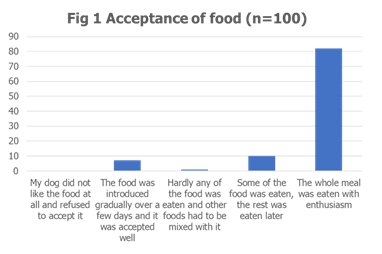
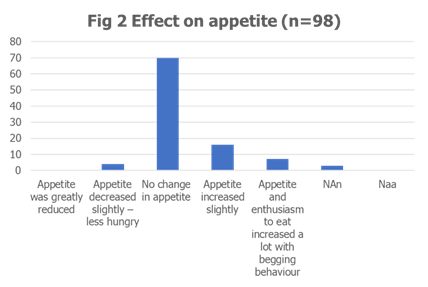
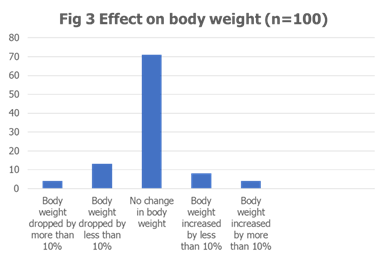
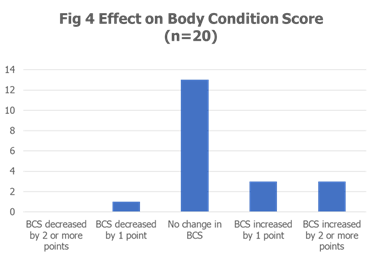
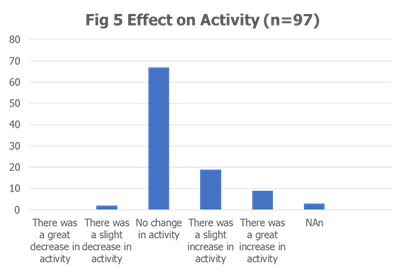
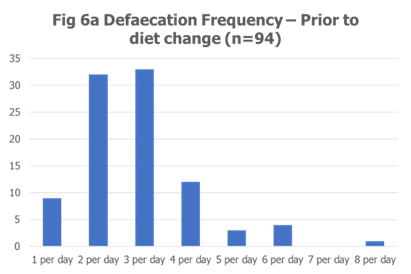
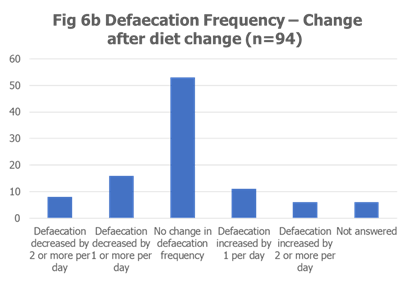
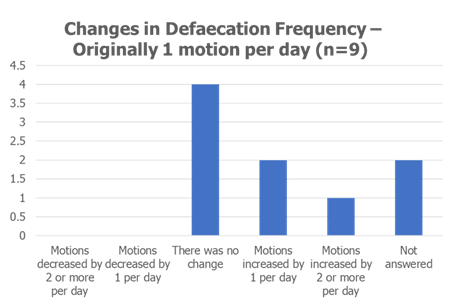
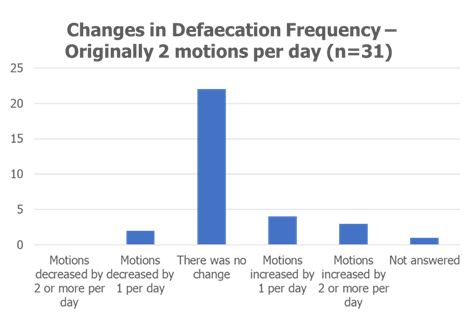
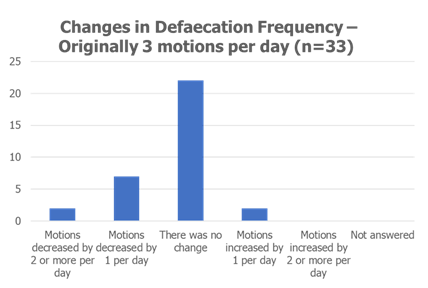
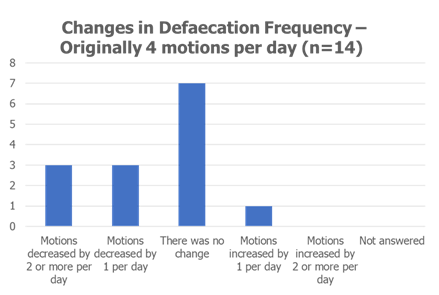
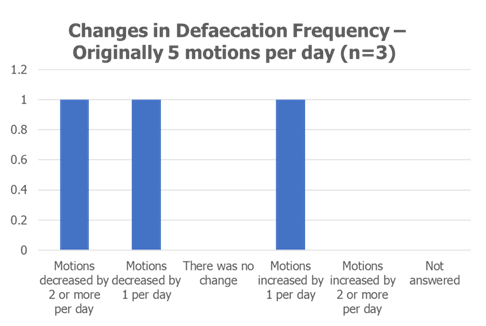
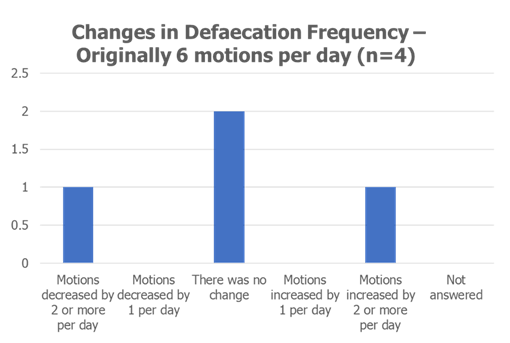
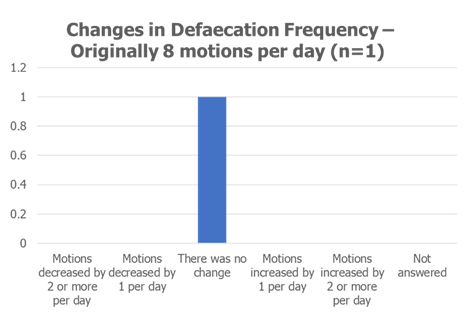
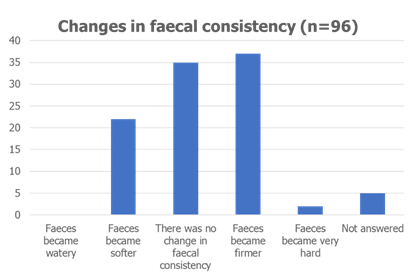
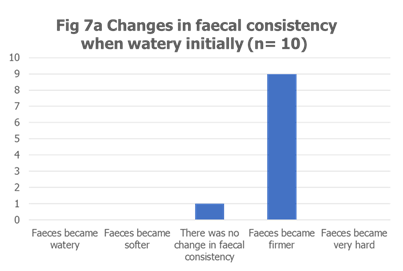
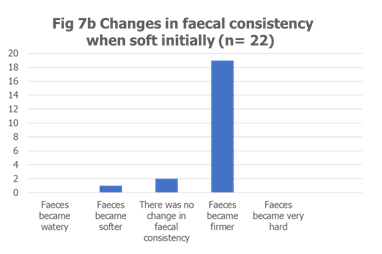
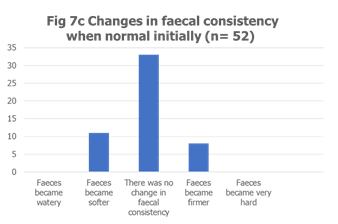
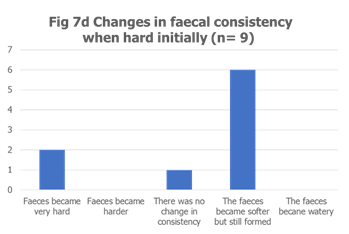
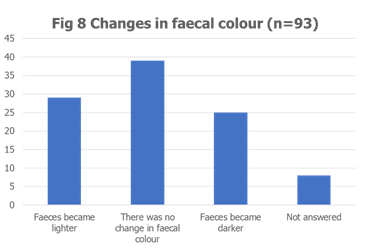
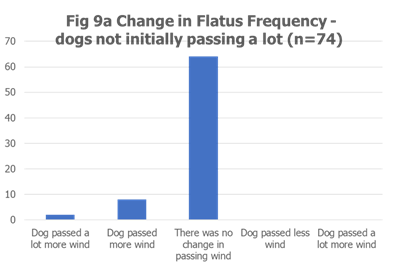
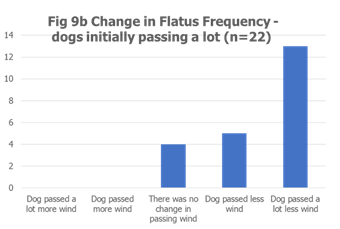
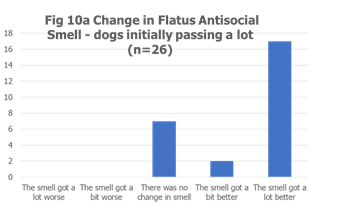
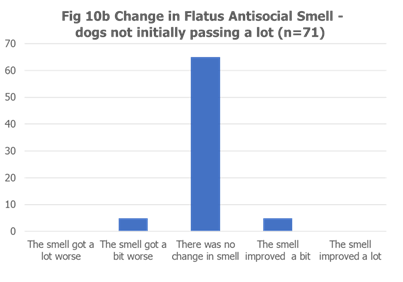
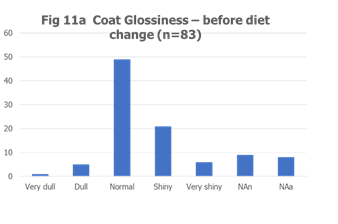
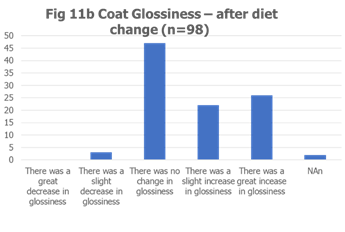
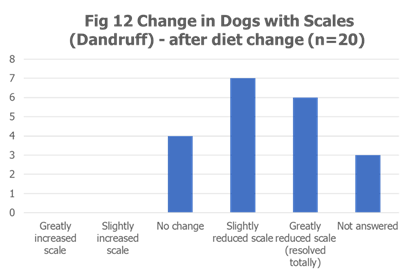
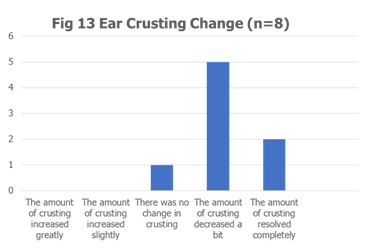
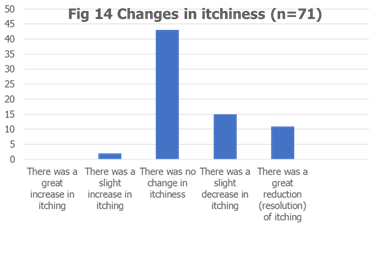
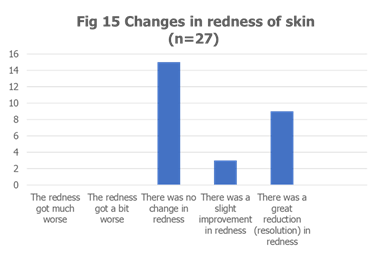
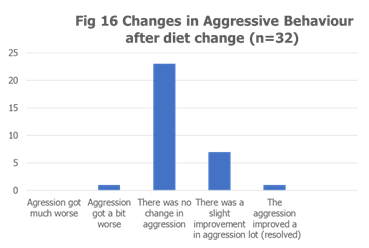
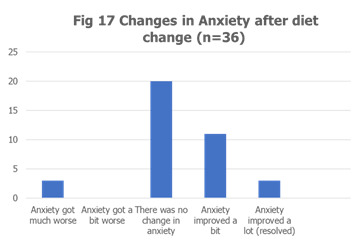
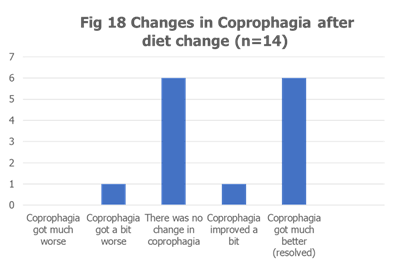
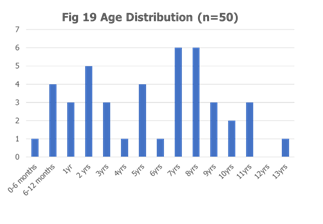
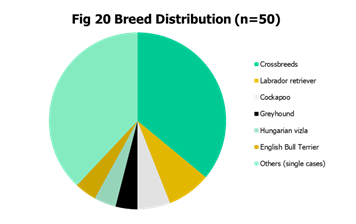

 Impact Factor: * 5.8
Impact Factor: * 5.8 Acceptance Rate: 71.20%
Acceptance Rate: 71.20%  Time to first decision: 10.4 days
Time to first decision: 10.4 days  Time from article received to acceptance: 2-3 weeks
Time from article received to acceptance: 2-3 weeks 